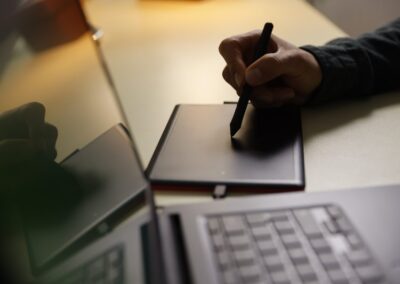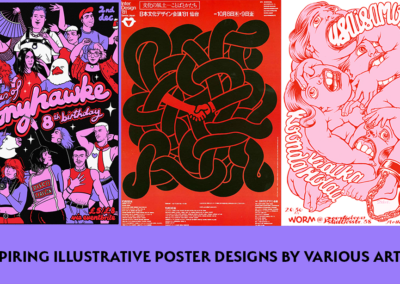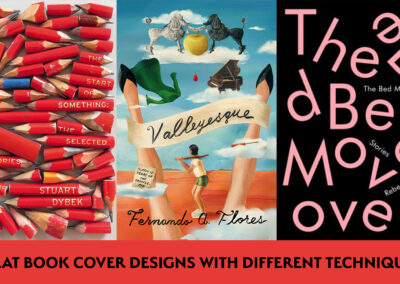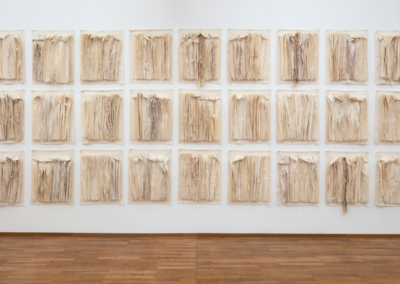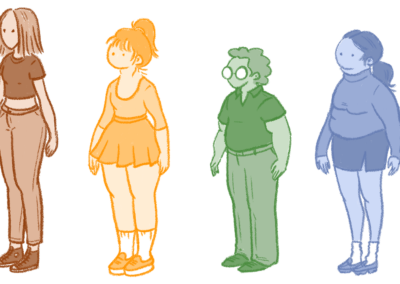- What is your typical workflow? What is your inspiration?
R: When I have an idea, I start first sketching on Paper, fast and schematic, just to catch the flow of thoughts and ideas and to lot loose them.
Then, still on paper I elaborate more deeply some of those scenes, to explore and clarify how concretely it can look like.
When it becomes more clear which visual direction the project can take, I need then too start testing the « how to make the film » and which technique or techniques to use and how to adapt in to animation: it’s here when I start exploring and testing digitally to figure out what’s the process I will use to make the film and how can I share the work with a small team later.
1-KALi, the little Vampire -Trailer from Regina Pessoa on Vimeo.
- What were the biggest challenges & pain points (technical and creative)?
R: In the case of this last film “Uncle Thomas – accounting for the Days », since the beginning of this project I had planned to use mixed techniques: I wanted to continue to develop my personal visual engraving style using digital 2D animation but I also wanted to use a little stop motion to animate the notes, diaries, objects and the material I had kept from my uncle.
Thus, Technically, this was my biggest challenge: how to combining all these different techniques and visuals to create an aesthetic coherence between all these media.
Emotionally, the biggest challenge was to be able to find a narrative and cinematographic structure from the biographical material I had and not disappoint or embarrass myself and honor my uncle’s memory.
And, of course, the Big challenge of all is what any animator faces: keep the strength and perseverance for all the hard work, overcome the obstacles and disappointments, find solutions and get the movie finished.
- What role is playing the digital work?
R: The digital work plays the Principal role in the film: all the entire 2D animation and Final Art with my engraving style were done digitally. And even the scenes animated using Stop Motion, like the real Papers, Notes, Diaries and objects form Uncle Thomas + the Shadows and Drawing on the wall scenes, even if they are shoot in Stop Motion, I would treat those scenes digitally one by one, to integrate them with the 2D Animation visual to order to get that coherence I was looking for.
So, in the end, every single Frame from my film was digitally generated.
- How did the Cintiq help you in doing the work?
R: The CINTIQ is my window to my mind… it is almost like there was a cable connecting it to my brain because with it I can forget the complexity of digital technology behind and concentrate only on my creations. This TOOL – Cintiq – is so well conceived that allowed a “brain to hand” connection, simplified all the tasks between, establishing is a straight connection between mind, body, and Screen. Thus, I’m able to use the software, the computer, the technology as a Tool at my service in a totally creative way and not slaving being at the service of the technology.
And it is the Cintiq and how it is designed who permits that.
- What steps were done on a Cintiq?
R: As I said before, every single image on the film was done using the Cintiq.
But, before that, with it I made also the entire preparation, visual research and Story Board.
It is present and essential in all the steps…
- Which software have you used?
R: I know it’s unusual but I made also the entire preparation, visual research, Story Board, animation and Final visuals with PHOTOSHOP…
I know not many people use this software for animation but in my case, it was with Photoshop that I managed to make the transition from analog to digital work: my visuals are very rich plastically, my first 2 animated shorts were made using real Animated Engraving techniques on Plaster and then on Paper. And when I had to transfer this very personal and intense and made visuals to digital work, it was with Photoshop that I succeed to develop the same richness and unique style, without losing my « signature » and personal satisfaction.
Then, for Compositing, I used After Effects and for Editing I used Premiere.
- Any tips and tricks for upcoming animation artists? Nerdy individual stuff? 😊
R: there are not many tricks when making animation besides work, work and… more WORK!
My tricks are just to approach a subject to work on in a film where I can find a strong personal motivation that allows me the resilience to endure he painful process of Animation and the strength to find solutions to problems that inevitably arise and thus get the job done to the end.
Self Portrait
Thank you so much Regina.
Go follow her:
Vimeo
Instagram
Twitter
You can watch the full Short film here: (only German and French): https://www.arte.tv/de/videos/071452-000-A/onkel-thomas/



